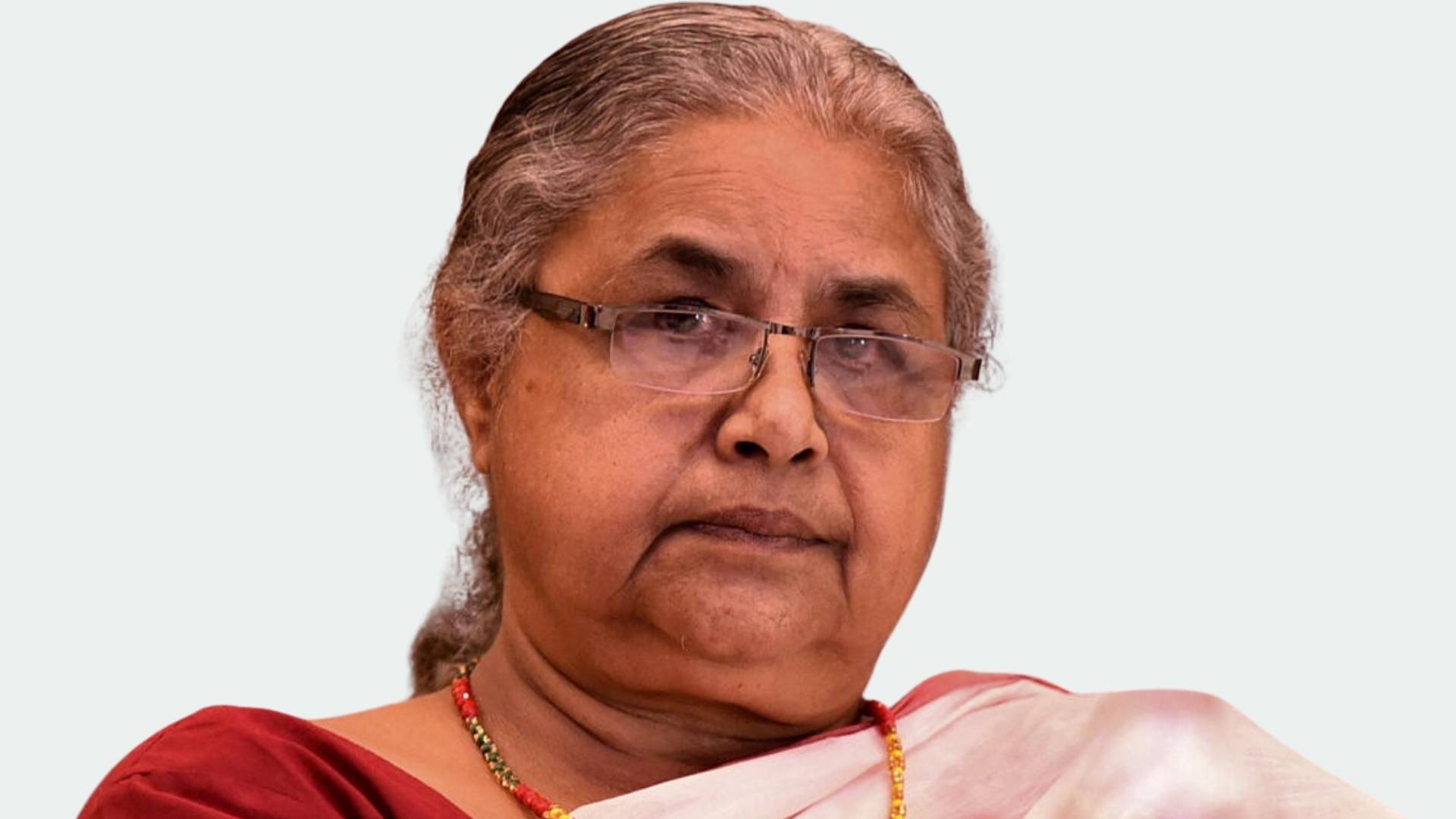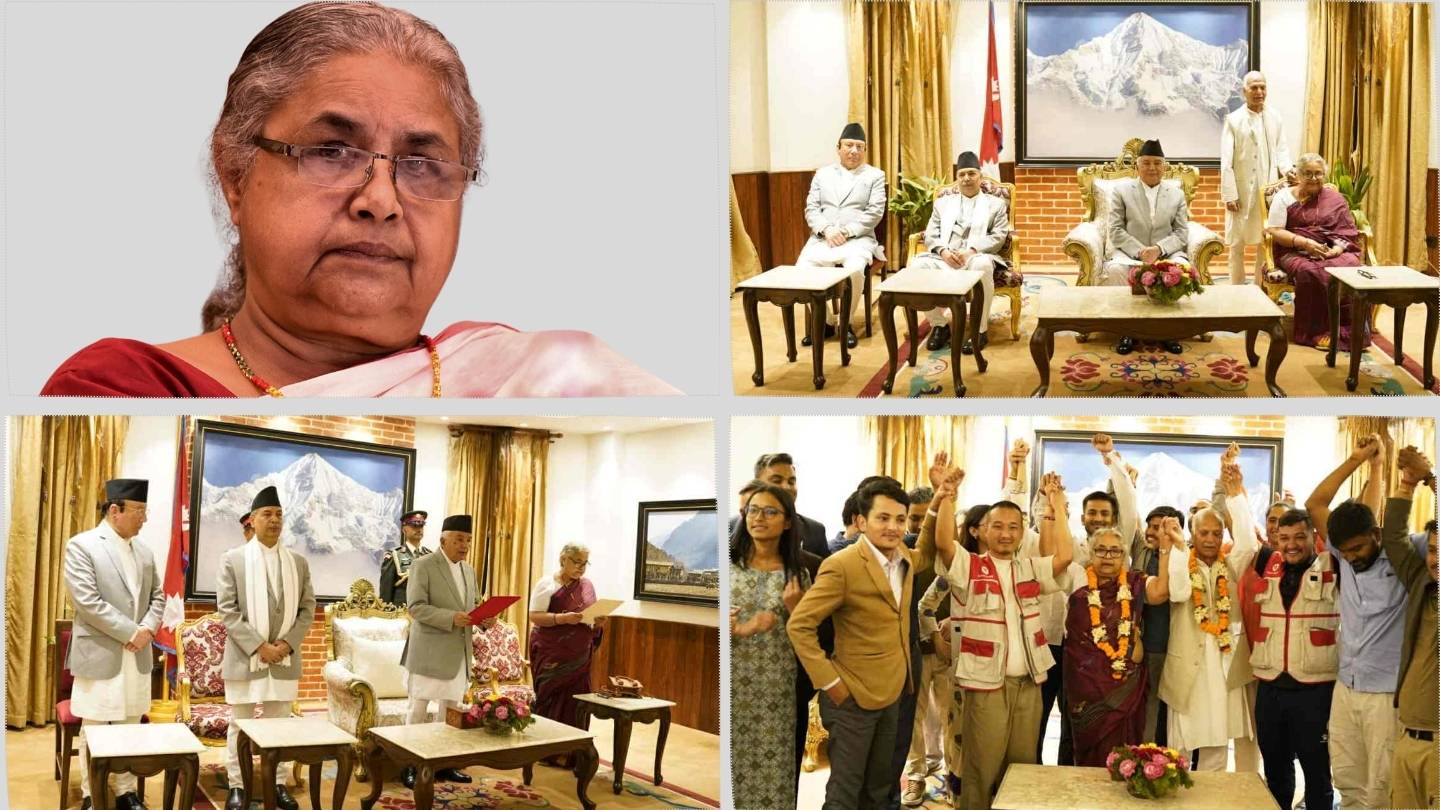
Sushila Karki: Nepal’s First Female Prime Minister (Interim) — Facts, Context, and Impact
Sushila Karki, a former Chief Justice of Nepal, took the oath as interim prime minister on 12 September 2025.
The appointment followed a week of youth-led demonstrations against corruption, nepotism, and a short social-media ban. Wire services and major outlets reported dozens of deaths and widespread injuries.
President Ram Chandra Paudel administered the oath at Sheetal Niwas.
The change in leadership came after K.P. Sharma Oli stepped down amid the unrest. Coverage noted curfews, army patrols, and a tense capital as negotiations produced an interim arrangement with Karki at the helm.
Why This Appointment Matters
Karki holds two firsts: first woman Chief Justice (2016–2017) and first woman to lead Nepal’s government.
In a region where women have guided national cabinets, a jurist stepping directly into an interim executive role stands out.
The moment carries symbolic weight, yet public attention centers on steady governance, credible investigations, and a clear election calendar.
What Triggered the Interim Phase
A temporary social-media ban lit a fuse under broader frustrations.
Young Nepalis mobilized, demonstrations escalated, and violent clashes followed.
Multiple outlets placed the national death toll near 51, with more than a thousand injured. Reports described attacks on government buildings, arson, and a rapid security response.
The Constitutional Path
Commentary and local explainers point to Article 61 of the Constitution of Nepal, which sets the President’s duties as guardian of the constitution and national unity.
In this emergency moment, that duty formed the legal basis for appointing a non-partisan interim leader when the standard government-formation route proved unworkable. Readers can cross-check presidential functions published by the Office of the President and local legal reporting on the use of Article 61.
Key takeaway for readers: Article 61 defines the President’s role. When ordinary coalition math breaks down, a caretaker path can be assembled to protect constitutional order until fresh polls occur.
Early Life and Education
Sushila Karki was born on 7 June 1952 in Biratnagar.
Biographical profiles note a childhood in a large farming family and studies that straddled Nepal and India.
She completed a Master’s in Political Science at Banaras Hindu University (1975) and a law degree at Tribhuvan University (1978) before entering practice.
From the Bar to the Bench
Karki began practice in 1979, later earning recognition as a senior advocate.
She entered the Supreme Court as an ad hoc justice in 2009, then became a permanent justice in 2010.
Profiles underline a straight-talking courtroom presence and a reputation for clean public service.
Tenure as Chief Justice (2016–2017)
Her term at the top of the judiciary arrived during political flux.
Reporting from that period and later retrospectives highlight a firm stance on integrity and practical changes in case handling.
The appointment itself was historic, setting a precedent for women in Nepal’s institutions.
The 2017 Impeachment Attempt
In 2017, lawmakers filed an impeachment motion that led to a brief suspension.
Within days, the Supreme Court ordered a stay, allowing her to return to duty.
The International Commission of Jurists urged withdrawal of the motion, citing risks to judicial independence.
The episode shaped her public image as a judge who could hold ground under pressure.
Writer and Public Voice
Karki authored Nyaya (autobiography) and Kara, a novel connected to time in Biratnagar Jail during the 1990 movement.
Coverage in Indian and Nepali outlets references these works when sketching her life beyond the bench.
For students and researchers, the books supply first-person material on justice, protest, and civic life.
Protest Data That Framed the Handover
International outlets reported around 51 deaths nationwide and 1,300+ injuries.
Coverage tracked mass prisoner escapes during the chaos, with thousands still unaccounted for as of oath day.
These numbers grounded public demands for a transparent probe into each death, each injury, and the chain of command at flashpoints.
Mandate of an Interim Prime Minister
Interim cabinets exist to steady the country, not to rewrite long-term policy.
For readers judging performance, three signposts matter:
-
Safety and rights: Calm streets without suppressing peaceful assembly and speech. Publish clear curfew logic and lift restrictions quickly once risk drops.
-
Accountability: Launch independent, time-bound inquiries into deaths, injuries, disappearances, and prison breaks. Public reporting builds trust.
-
Elections: Announce a credible timeline early, with safeguards for fair competition and non-partisan administration.
What Citizens Can Watch in the Coming Weeks
Readers looking for practical signals can track the following:
-
Commission setup: Names, mandate, deadlines, and rules on evidence.
-
Victim services: Medical billing support, legal aid access, and documentation protocols for families.
-
Crowd communication: Daily updates that reduce rumor cycles.
-
Election calendar: A public schedule with milestones that media and monitors can verify.
International reports already mention shops reopening in parts of Kathmandu—a small sign that daily life is restarting.
Those signals grow stronger with transparent communication and a visible path to polls.
Gender Milestone and Public Life
Nepal has had women in top constitutional posts, including the presidency.
A woman leading the cabinet sets a new marker.
Global and regional research links women’s presence in executive roles with greater attention to justice and social protection.
The effect depends on cabinet cohesion, civil-service capacity, and public feedback loops—factors that an interim setup can shape even within a short time.
For the moment, the milestone gives many girls and young women a living example at the very center of state power.
How Karki’s Judicial Record Informs the Interim Role
A judge’s habits—reading records, focusing on procedure, resisting pressure—can influence the way an interim cabinet runs.
Media profiles and the 2017 episode point to a leader experienced in holding lines when partisans push hard.
That background can help with:
-
Evidence standards in inquiries.
-
Clear rules on police use of force.
-
Administrative neutrality in an election season.
Balanced View of the Road Ahead
Supporters see an opportunity: a respected non-partisan figure with a record of independence.
Skeptics raise a fair question: can a legal mind with limited executive practice steer a turbulent transition?
The answer will live in decisions taken during the first month—cabinet picks, the structure of investigations, and straight reporting to the public.
Career Timeline at a Glance
-
1952 — Born in Biratnagar.
-
1975 — M.A., Political Science, BHU.
-
1978 — Law degree, Tribhuvan University. Legal practice begins in 1979.
-
2009–2010 — Ad hoc justice, then permanent justice, Supreme Court of Nepal.
-
2016–2017 — First woman Chief Justice.
-
2017 — Impeachment motion; Supreme Court stay and return to work.
-
2018–2019 — Publishes Nyaya and Kara.
-
12 Sept 2025 — Sworn in as interim prime minister.
Q&A on the Interim Phase
What can an interim cabinet achieve in a short span?
Stability, a transparent inquiry into casualties and violations, and a public election calendar.
These three deliverables matter more than long lists of policy pledges.
What signals will show that investigations are real?
A legally sound mandate, independent leadership, witness protection measures, and the release of findings on a fixed schedule.
How does Article 61 fit into this?
It defines the President’s duty to protect the constitution and national unity.
In this event, it served as the basis for bringing in a non-partisan leader while parties regroup.
Why is Karki’s 2017 episode relevant now?
It shows how she handled pressure in a direct, high-stakes clash with politicians.
That history helps readers anticipate a rules-first style in the months ahead.
What outcomes would mark a successful interim period?
Fewer clashes, credible steps toward justice for victims, and a polling date all sides accept.
Reports already hint at slow normalization in parts of the capital.
South Asia Context: Women at the Helm
Several countries in the region have had women prime ministers or presidents.
Nepal’s case features a jurist stepping in during unrest, which gives researchers a fresh angle on crisis leadership.
Comparative study can track how interim cabinets shape public trust when violence and political deadlock intersect.
Conclusion
Sushila Karki’s appointment as interim prime minister closes one chapter and opens another.
The story now turns on practical steps: calm the streets, document the facts, and deliver an election schedule people trust.
Her judicial record and writing give the public a sense of the person behind the title.
The coming weeks will reveal how a rules-first style handles a national stress test.
FAQs
1) When did Sushila Karki take office?
On 12 September 2025, after a week of unrest and a leadership vacuum.
2) What prompted the interim setup?
Youth-driven protests over governance and a social-media ban, rising violence, and a prime-ministerial resignation created a need for a caretaker path.
3) Which constitutional hook was cited?
Article 61, highlighting the President’s duty to protect the constitution and national unity.
4) What makes Karki’s background distinctive?
First woman Chief Justice, a public record on anti-corruption, survivor of a 2017 impeachment attempt that the Supreme Court halted.
5) What outcomes should readers look for?
Independent inquiries with public reports, easing of curfews, and a published polling calendar that competing groups accept.
Nepal Engineer Association Nepal Related Topics


